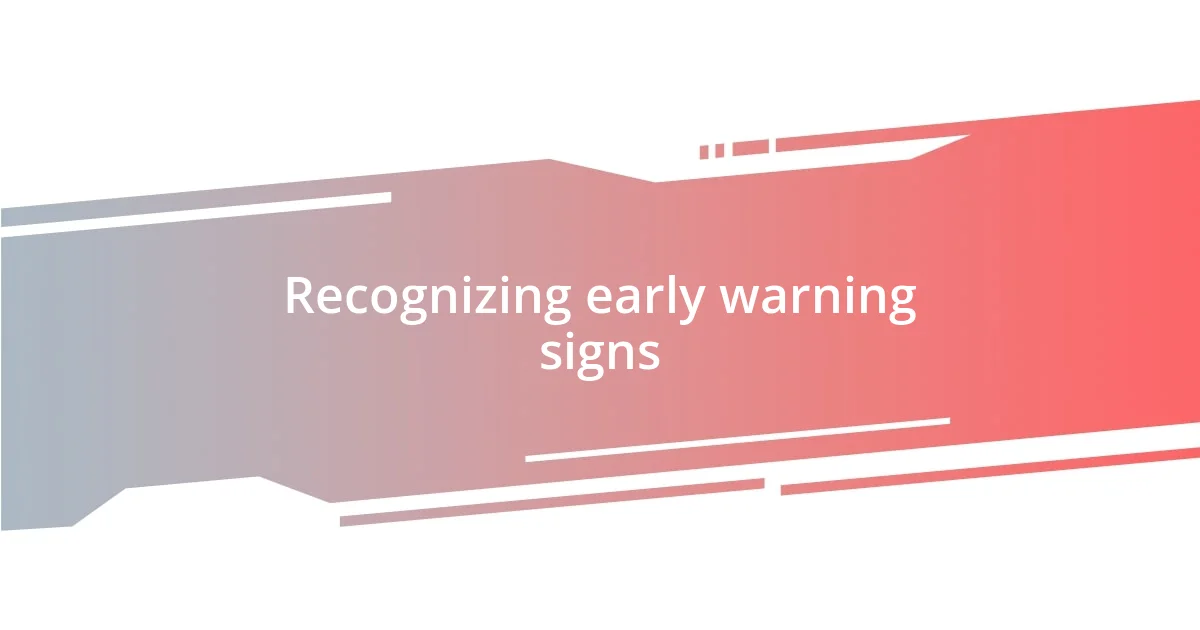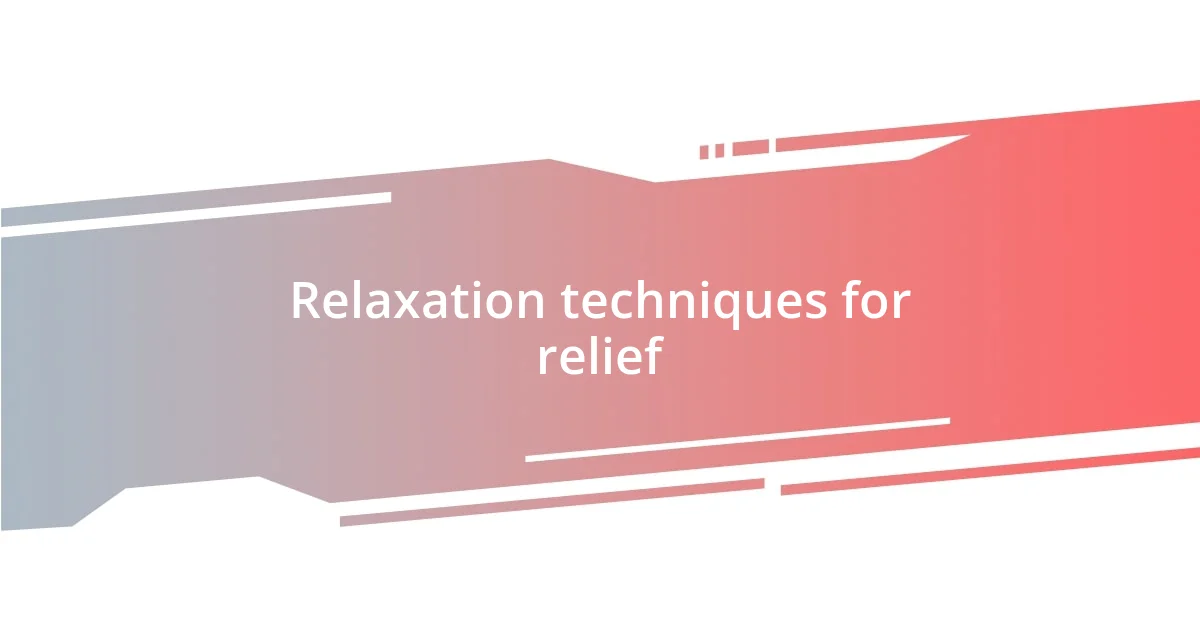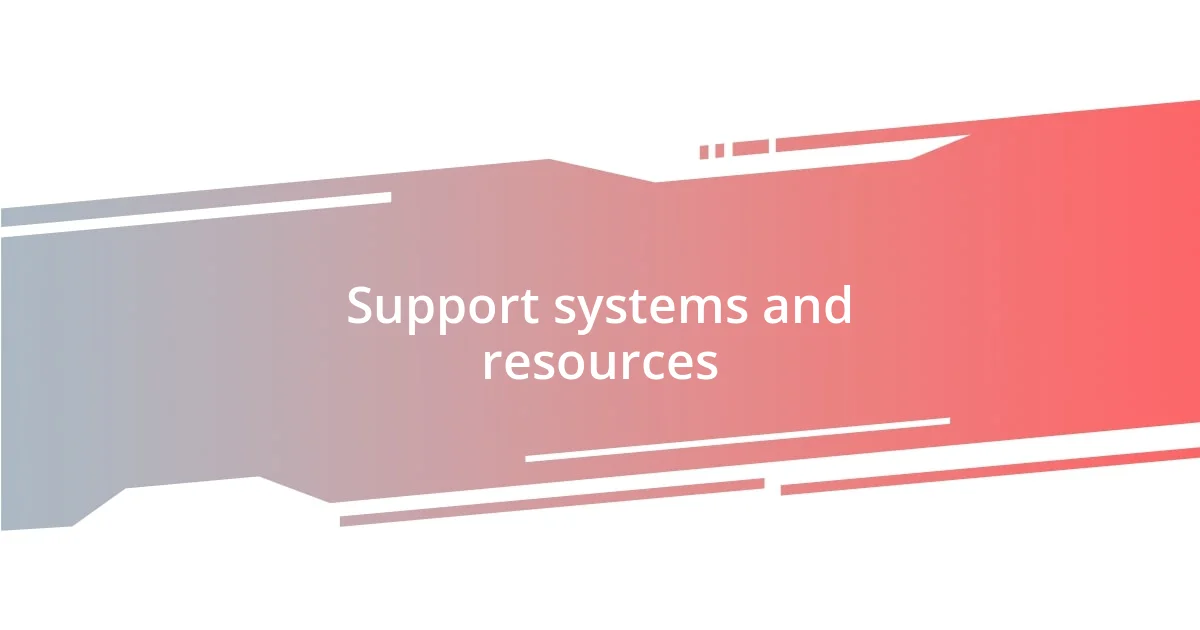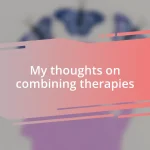Key takeaways:
- Understanding early warning signs of CRPS flare-ups—such as sensitivity to touch, skin changes, and tingling—can help in managing pain effectively.
- Utilizing various pain management strategies, including mindfulness meditation, gentle physical activity, and heat therapy, can alleviate discomfort during flare-ups.
- Building a strong support system, engaging in online communities, and practicing long-term coping mechanisms like journaling and mindfulness can provide emotional relief and a sense of belonging.

Understanding CRPS flare-ups
Complex Regional Pain Syndrome (CRPS) flare-ups can feel like an overwhelming tidal wave of pain and discomfort. I still vividly remember the day when a sudden flare-up shot through my body, leaving me breathless and questioning what triggered it. Was it stress, weather changes, or perhaps something I ate? Each flare seems to carry its distinctive signature, making it a complex puzzle to solve.
During flare-ups, the pain can escalate to such an intense level that it consumes all my thoughts. I recall one time sitting in a quiet room, trying to distract myself, but the discomfort was relentless. Have you experienced that tug-of-war between wanting to engage in daily life and feeling imprisoned by your body’s rebellion? It’s a struggle many CRPS sufferers can relate to and one that often feels isolating.
Understanding the nuances of these flare-ups has been crucial in my journey. They can vary in duration and intensity, and I’ve learned to recognize my early warning signs. There was a point when I started keeping a journal, noting down symptoms, triggers, and my emotional state during each flare. Has anyone else tried something similar? It might just offer a clearer picture of what you’re facing. Each entry brought me a bit more clarity, helping me to navigate this unpredictable journey with a little more confidence.

Recognizing early warning signs
Recognizing the early warning signs of a CRPS flare-up is a skill that takes time and attentiveness. Personally, I’ve found that tuning into my body can make a significant difference. There’s often a subtle change in the way my skin feels or a slight twinge of pain that stands out—like an itch that begs for attention. It’s easy to brush off these early cues, but I’ve learned that dismissing them can lead to that overwhelming wave of pain I dread.
Here are some signs I’ve learned to watch for:
- Increased sensitivity to touch, where even light fabric feels irritating.
- Subtle changes in skin color or temperature—perhaps my skin looking pale or unusually warm.
- A tingling sensation that feels like static electricity buzzing in my affected limb.
Listening closely to these signals has helped me take proactive measures, such as adjusting my activities or using relaxation techniques. I remember one evening after a long day, I felt that familiar tingle in my foot and decided to rest instead of pushing through. That choice spared me from a more intense flare-up later, and it was a valuable reminder that awareness is key.

Effective pain management strategies
Managing pain during CRPS flare-ups requires a toolbox of effective strategies that I’ve curated over time. One technique I swear by is mindfulness meditation. It may sound simplistic, but incorporating a few moments of mindfulness into my day doesn’t just calm my racing thoughts; it also refocuses my attention away from the pain. Sitting quietly, breathing deeply, and observing the sensation without judgment often brings a sense of peace, even amidst the turmoil. Have you been hesitant to try meditation? If so, I encourage you to give it a shot; it’s much easier to do than it seems, and the benefits can be profound.
Another noteworthy strategy is gentle physical activity, such as stretching or yoga. Oddly enough, engaging in these activities tends to ease my pain rather than exacerbate it. I recall feeling particularly stiff and achy one rainy afternoon, so I rolled out my yoga mat and spent just 15 minutes moving through some light stretches. To my surprise, I stood up feeling significantly lighter, as though the heaviness of the flare-up dissipated with each gentle movement. It’s a reminder that sometimes our bodies crave motion, even when they seem resistant.
Lastly, I have learned to utilize heat therapy effectively. I have a trusty heating pad that I often apply to the affected area during a flare-up. The warmth provides comfort that I find deeply soothing and helps relax those tight muscles that are often a product of the pain. I’ve even taken to filling a sock with rice, microwaving it, and using it as a homemade heat pack. It may sound a bit unconventional, but in moments of agony, those little homemade comforts mean the world to me.
| Pain Management Strategy | Personal Experience |
|---|---|
| Mindfulness Meditation | This practice helps to calm my thoughts and shifts focus away from pain, creating a sense of peace. |
| Gentle Physical Activity (e.g., Yoga) | Light stretches have alleviated pain for me, surprising me with the relief they bring even on bad days. |
| Heat Therapy | A heating pad or rice sock has been a comforting relief during flare-ups, promoting muscle relaxation. |

Importance of physical therapy
Physical therapy has been a cornerstone in managing my CRPS flare-ups. It offers a structured approach that encourages gradual movement and flexibility, which I’ve found essential. There were times when I felt hesitant about engaging in physical therapy, fearing it would only heighten my pain. However, I discovered that the right exercises, tailored to my needs, actually helped build strength and confidence in my affected areas.
One memorable session sticks with me; I was struggling with a particularly tough day, and our therapist led me through a series of gentle movements. I honestly felt a bit skeptical at first, but as we progressed, I noticed how my body responded positively. Each careful stretch seemed to unravel some tension, and by the end of that session, I felt an overwhelming sense of accomplishment. It reminded me that even small victories matter.
I’ve often wondered what life would look like without the guidance of my physical therapist. Their expertise has not only taught me valuable techniques for movement but has also empowered me to take an active role in my recovery journey. There’s something therapeutic about having someone alongside you—someone who understands your limits and can help navigate the journey towards progress, even when the road feels daunting.

Relaxation techniques for relief
When flare-ups strike, I often turn to deep breathing techniques as a powerful means of relaxation. I remember a particularly stressful day when my pain levels shot up unexpectedly. Rather than succumbing to anxiety, I decided to pause and focus on my breath. Inhaling slowly through my nose, holding for a moment, and then exhaling gently helped reduce my tension. It’s amazing how just a few minutes of intentional breathing can center me and alleviate some of the discomfort.
Progressive muscle relaxation is another technique that has worked wonders for me during intense flare-ups. I recall lying in bed one evening after a long day of discomfort, feeling utterly drained. Instead of simply tossing and turning, I began tensing and then relaxing each muscle group in my body, starting from my toes and working up to my head. I was surprised at how much lighter I felt afterward. This practice not only released physical tension but also quieted the racing thoughts triggered by my pain—a true win-win in my book.
I also find great relief in visualization techniques. During a particularly overwhelming flare-up, I closed my eyes and vividly pictured my favorite serene place—a quiet beach where the sound of waves soothes my soul. I immersed myself in the details: the warmth of the sand, the gentle breeze, and the soothing rhythm of the ocean. This little mental getaway provided a refreshing break from the pain, serving as a reminder that I can create my own sense of peace, even in the toughest moments. Have you ever tried visualizing your happy place? If you haven’t, I encourage you to give it a whirl; you might be amazed at how it can transform your experience.

Support systems and resources
Having a reliable support system is invaluable during CRPS flare-ups. I’ve leaned heavily on my close friends and family, who provide emotional comfort and practical help when the pain becomes overwhelming. There were days when I felt utterly isolated in my struggles, but just a simple phone call or a text message from a loved one made all the difference. It reminded me that I’m not alone on this journey, and sometimes, just sharing how I feel can alleviate some of the burden.
I’ve also come to appreciate online communities dedicated to chronic pain. Engaging in discussions with others who truly “get it” fosters a sense of belonging that’s hard to replicate elsewhere. I vividly recall a night spent reading through forum posts, nodding in understanding as people shared their stories and coping strategies. Reading those words felt like a warm hug; it’s comforting to know there are others navigating similar experiences. Have you ever joined such a community? If not, I highly recommend seeking one out—it might just provide the insight and encouragement you need.
Lastly, exploring resources like CRPS-focused support groups has been an eye-opener for me. These meetings offer a safe space to share experiences and gain fresh perspectives. I’ll never forget my first attendance; I walked in feeling hesitant, but I soon found solace in the shared tales of resilience. Listening to others’ journeys inspired me and sparked conversations that transformed my own view of healing. Being part of a collective effort toward recovery is empowering; it reinforces the idea that we’re all in this together, and that connection is a powerful tool in our arsenal.

Long-term coping mechanisms
Embracing journaling as a long-term coping mechanism has been transformative for me. In those moments of acute pain, grabbing a pen and pouring my thoughts onto paper provides an unexpected release. There’s something cathartic about capturing my feelings, and it often feels like I’m unburdening a heavy weight from my shoulders. Have you ever tried this? Reflecting on what I wrote later allows me to spot patterns in my flare-ups, offering insights on what triggers my pain—a light bulb moment that truly empowers my journey.
Mindfulness practices have also become a cornerstone of my daily routine. Each morning, I dedicate a few minutes to simply sit and observe my thoughts without judgment. I remember the first time I tried it; the sensation of being present felt foreign yet refreshing. By acknowledging my pain rather than resisting it, I’ve learned to coexist with discomfort. This practice fosters a sense of control that leaves me feeling more grounded. Have you explored mindfulness in your own life? It might just help you discover a new way to navigate your experience.
Additionally, maintaining a consistent exercise routine tailored to my abilities has been invaluable. While it seemed daunting to move when fatigue set in, gentle activities like yoga or stretching have become surprisingly enjoyable. I recall one evening when I pushed through my reluctance and joined an online yoga class specifically designed for chronic pain management. The experience was both calming and invigorating, serving as a reminder that taking even small steps can create momentum. Finding physical movement that feels right for your body can be a game changer—what have you found that works for you?












